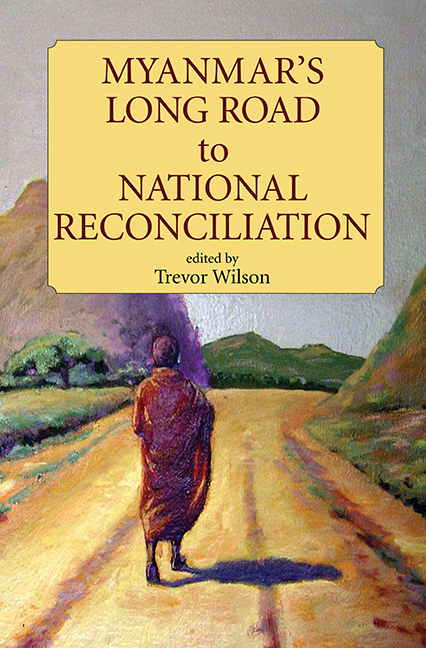Book contents
- Frontmatter
- Contents
- Acknowledgements
- The Contributors
- Glossary
- Overview
- I Perspectives on Recent Political Developments
- II Perspectives on the Economy and on Agricultural Development
- 4 Burma's Economy 2004: Crisis Masking Stagnation
- 5 The Status of the Agricultural Sector in Myanmar in 2004
- 6 Sustainable Agricultural and Rural Development: Pathways to Improving Social, Economic and Environmental Conditions in Myanmar
- 7 The Agricultural Sector and the Role of International Assistance in Promoting Agricultural Reform in Myanmar
- III Perspectives on National Reconciliation and Civil Society Development
- IV Charting the Way Ahead
- Index
7 - The Agricultural Sector and the Role of International Assistance in Promoting Agricultural Reform in Myanmar
from II - Perspectives on the Economy and on Agricultural Development
Published online by Cambridge University Press: 21 October 2015
- Frontmatter
- Contents
- Acknowledgements
- The Contributors
- Glossary
- Overview
- I Perspectives on Recent Political Developments
- II Perspectives on the Economy and on Agricultural Development
- 4 Burma's Economy 2004: Crisis Masking Stagnation
- 5 The Status of the Agricultural Sector in Myanmar in 2004
- 6 Sustainable Agricultural and Rural Development: Pathways to Improving Social, Economic and Environmental Conditions in Myanmar
- 7 The Agricultural Sector and the Role of International Assistance in Promoting Agricultural Reform in Myanmar
- III Perspectives on National Reconciliation and Civil Society Development
- IV Charting the Way Ahead
- Index
Summary
In Myanmar, the rural sector plays a dominant role in the economy and agriculture, based on Myanmar's rich natural resources, and is a major potential growth engine in overall national development. An overview of the agricultural sector will highlight the potential for international technical assistance, assistance that will need a strong humanitarian focus.
There is a wide range of agro-climatic zones in Myanmar, ranging from an equatorial zone in the south, a densely populated humid zone at the Irrawaddy [Ayeyarwady] River delta, merging in the centre to an extensive “dry zone” that is surrounded by mountain ranges and a high plateau in the east. The agricultural sector (which includes crops, livestock, fisheries and forestry) involves 75 per cent of Myanmar's population of an estimated 51 million people; it accounts for 40 per cent of gross domestic product (GDP) and two-thirds of all employment. In contrast, industry contributes only ten per cent of GDP. Consequently, changes and reforms in the agricultural sector are of national importance. The agricultural sector will continue to have a dominant role in the development of Myanmar.
Overview of the Agricultural Sector
Myanmar has abundant land and low labour costs, which give the country a comparative advantage in a number of sub-sectors, such as crops, livestock, and fisheries. Of Myanmar's 68 million hectares of land-mass, almost 18 million hectares are classified for agricultural production, and just 60 per cent of that is currently exploited. Forestry accounts for 50 per cent of the land area. Under the constitution of Myanmar, all land ownership rests with the state. Farmers have security of tenure, which is inheritable, but land rights cannot be sold or transferred. The most recent census (1993) indicates that 80 per cent of holdings are below 2 hectares and only 3 per cent are bigger than 8 hectares. In 1991, to encourage industrial agriculture, the government gave thirty-year leases of large blocks (2000 hectares each) to companies and individual investors.
- Type
- Chapter
- Information
- Myanmar's Long Road to National Reconciliation , pp. 127 - 146Publisher: ISEAS–Yusof Ishak InstitutePrint publication year: 2006



